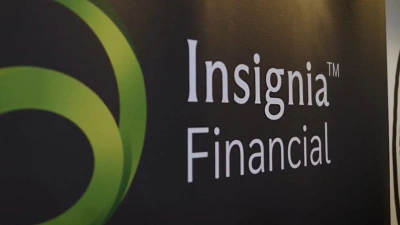Private equity goes public to boost appeal
The world of private equity investing has tended to be the reserve of the wholesale market. It has certainly not been for the small investor, but as investment managers search for new asset classes to bring to the retail marketplace, private equity has become the latest offering.
ING Investment Management has launched a listed investment company (LIC) vehicle that will specialise in private equity.
The LIC is known as the ING Private Equity Access Limited (PEAL) and planned to raise $120 million before it closed late last week.
ING PEAL managing director Jon Schahinger says the company has been raising private equity for the wholesale market for a couple of years, but this is its first venture into retail markets.
“The last couple of years our wholesale funds have been giving excellent returns,” he says.
“But these have been fixed term with no liquidity, which was unsuitable for the retail market.”
The new offering is a stapled security which consists of two shares in the LIC and one option which can be exercised at $1 between November 2005 and October 2007.
On October 31 next year, the security will unstaple and both shares and options will trade on the Stock Exchange.
“The difficulty for the retail market was creating liquidity, but this was the most important feature,” Schahinger says.
“We also had to look at creating an initial platform of capital which will then enable us to invest in private equity vehicles.”
The ING PEAL has taken a fund-of-funds approach and will invest in a diversified range of established underlying private equity managers.
The focus will be on giving investors access to institutional private equity managers, allowing smaller investors to “get in at the ground floor”, says Schahinger.
“We are confident we can build a good portfolio of private equity managers.”
The managers to be selected will be from a broad spectrum operating in a variety of sectors, geographic borders and maturity of companies they are investing in.
The portfolio is being tilted towards the low-risk end of the private equity spectrum.
According to the 2003 edition of the Australian Venture Capital Journal, there were 91 private equity fund managers in Australia and the sector attracted $729 million. Of this sum, $863 million was invested in 418 businesses.
“Australia has had the best-performing private equity market in the world over the past few years, which serves to validate the notion that the sector has finally come of age,” Schahinger says.
“We’ve seen a significant maturing of the market and a deepening pool of established managers who have the battle scars and experience to replicate past performance over the coming years.”
The actual investment process will be based on a template created by the PEAL investment team, which will commence with a set of suitability filters.
From this a short-list of managers will be developed and due diligence will take place on these finalists.
This list will then be forwarded to the investment committee to assess the risks involved in an investment, weighed up against the potential strong returns.
As part of the checks and balances process after the investment has been made, ING will be seeking a board position on the fund managers it has invested in.
Schahinger says the initial investment will probably be in five or six managers. The aim will be for the fund to be fully invested in about 12 managers in 18 months.
As this is a new product there are no past performance figures, but looking at the manager’s two wholesale private capital funds, the two-year returns have been between 18.2 per cent and 24.5 per cent.
The return on the first fund, since its inception in September 1998, has been 9.3 per cent. The second fund, started in July 2000, has given a return of 13.5 per cent. ING is predicting its PEAL offering will track in a similar performance fashion.
The predicted returns are similar to research into the sector undertaken in the US by the Center for International Securities and Derivative Markets this year.
It studied private equity investment returns during the period 1990-2003 and compared these to other asset classes and indexes.
During that period, private equity achieved an annualised return of 11.8 per cent. This compared to the S&P 500 with 10.94 per cent and the hedge fund composite index with 13.87 per cent.
The venture capital segment of the private equity market, which is included in ING’s new product, was singled out as a separate asset class in the research and was shown to have returned 15.62 per cent.
The report notes private equity in a portfolio increases returns, although with higher volatility.
Venture capital should be considered as a return-enhancer rather than a risk-diversifier, the report says.
Further research by the centre found a private equity portfolio, consisting of 40 per cent venture capital, 40 per cent leveraged buyouts and 20 per cent mezzanine capital, could have a return as low as -10.03 per cent while, at the top end, a return of 12.12 per cent could be achieved.
Research into the retail private equity market in Australia is almost non-existent at present.
ING has not had its PEAL product rated by the traditional investment research houses, relying instead on factual reports from the supporting brokers.
Zenith Investment Partners has looked at the sector as part of a rating for the Macquarie Diversified Private Equity Fund, which was given a recommended rating earlier this year.
“The retail private equity sector at this stage is very small, although it is growing,” says Zenith director David Smythe.
“Advisers are looking for alternative asset classes and there are probably only a half-dozen managers offering products in this sector.”
The Macquarie fund has been successful in raising capital and might close before the December 2004 cut-off.
“Managers have been watching the outcome of the Macquarie fund and its success has resulted in other managers looking at offerings,” he says.
“The ING product is a classic example of this.”
The Macquarie product is a fund-of-funds which Smythe says is typical for the sector.
“We prefer that model for products as it gives greater diversification,” he says.
“It also enables the manager to buy into the investment at an earlier stage rather than later and paying a higher entry cost.”
Response from advisers to the private equity sector is at early stages, although many have advised clients to invest in LICs.
“The sector does need some more education to be provided to advisers,” Smythe says.
“But we do see value in adding some private equity investments to a portfolio for diversification.”
Recommended for you
Net cash flow on AMP’s platforms saw a substantial jump in the last quarter to $740 million, while its new digital advice offering boosted flows to superannuation and investment.
Insignia Financial has provided an update on the status of its private equity bidders as an initial six-week due diligence period comes to an end.
A judge has detailed how individuals lent as much as $1.1 million each to former financial adviser Anthony Del Vecchio, only learning when they contacted his employer that nothing had ever been invested.
Having rejected the possibility of an IPO, Mason Stevens’ CEO details why the wealth platform went down the PE route and how it intends to accelerate its growth ambitions in financial advice.














